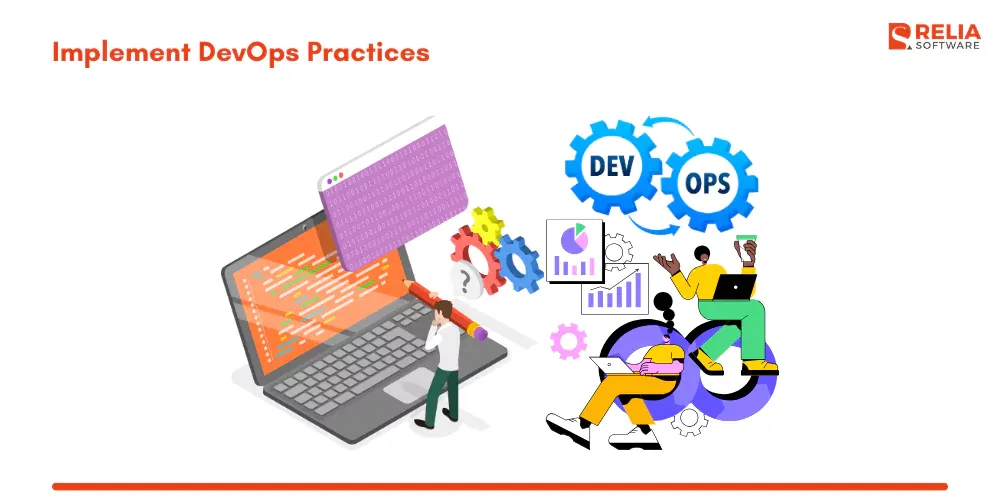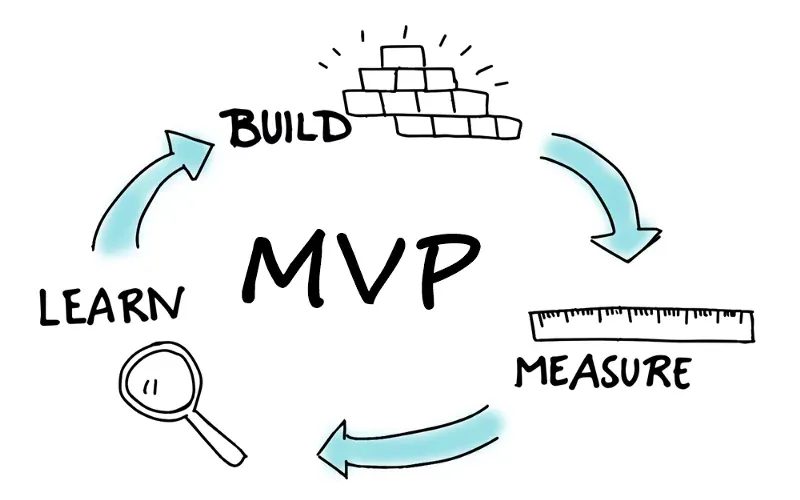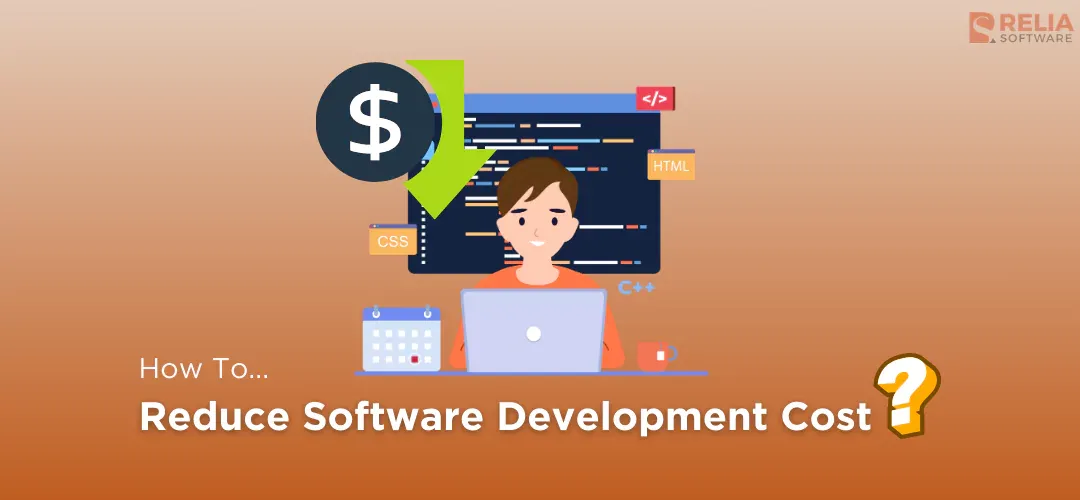How to reduce software development costs? As competition intensifies and market demands evolve rapidly, organizations are under increasing pressure to deliver high-quality software products efficiently and cost-effectively. You should make intelligent decisions to decrease development costs because many dangerous tactics will allow you to save a little but may cost you more in the long term.
This article will give you the answer to the challenge of reducing software development costs. 12 strategies can help businesses significantly reduce software development costs without compromising quality or functionality. Organizations can optimize their development processes, improve resource allocation, and achieve substantial cost savings by implementing these strategies.
>> Read more:
- How To Manage A Software Development Team?
- Product Metrics in Software Engineering: Types, Techniques, Tools
- What are Software Development Standards and Best Practices?
Set Clear Goals and Expectations
Defining clear project requirements and measurable goals is essential to reducing software development costs. When all stakeholders clearly understand the project’s objectives, it reduces the risk of miscommunication and misaligned expectations. Additionally, well-defined objectives allow for better resource allocation, ensuring time and money are spent on high-priority tasks rather than unnecessary rework.
Criteria To Set Clear Goals:
- Clarity: Ensures everyone involved understands the project's purpose, scope, and desired outcomes.
- Focus: Helps prioritize tasks and allocate resources effectively.
- Alignment: Ensures all team members are working towards the same objectives.
- Measurability: Provides a way to track progress and assess success.

Project Management Best Practices
Effective project management is critical to keeping software development projects on track and within budget. By leveraging proven techniques and utilizing the right tools, companies can manage their projects more efficiently, leading to reduced software development costs.
Techniques:
- Iterative Planning: Break down the project into smaller, manageable iterations to allow for flexibility and adjustments.
- Risk Management: Identify potential risks and develop strategies to mitigate their impact.
- Continuous Monitoring: Track progress and identify potential issues early to prevent them from escalating.
Jira, Asana, Trello, and Basecamp are popular project management tools that offer features like task management, issue tracking, team collaboration, project scheduling, and visual organization. These tools can help you set and track goals effectively.
Also, if you or your team are new to these practices, taking a short project management course can be a helpful way to strengthen your skills.

Ensure Effective Communication
Clear and effective communication is vital for the success of any software development project. Ineffective communication can lead to significant cost increases in a project. Here are some ways in which ineffective communication can increase your costs:
- Delays and Rework: Misunderstandings, unclear instructions, and lack of coordination can result in delays and the need for rework. These delays can lead to increased labor costs, missed deadlines, and potential penalties.
- Scope Creep: Ineffective communication can lead to scope creep, where the project's scope expands beyond the original agreed-upon boundaries. This can result in additional costs for labor, materials, and resources.
- Reduced Productivity: Poor communication can hinder collaboration and teamwork, leading to reduced productivity and increased project timelines.
- Increased Conflict: Misunderstandings and miscommunication can create conflicts between team members, which can disrupt the project's progress and increase costs.
- Lower Quality: Ineffective communication can lead to errors, mistakes, and lower-quality deliverables, which may require additional resources to rectify.
Ensuring consistent and transparent communication within the development team and with stakeholders helps streamline the development process, optimize productivity, and ultimately reduce software development costs.

Outsource and Offshore Strategically
Outsourcing and offshoring have become popular strategies for companies looking to reduce software development costs while accessing specialized skills. By strategically choosing when and where to outsource or offshore, businesses can significantly lower labor costs, increase efficiency, and focus on their core competencies.
How Do Outsourcing and Offshore Reduce Project Costs?
- Lower Labor Costs: Outsourcing and offshoring can significantly reduce the cost of hiring and retaining development talent.
- Improved Efficiency: By outsourcing non-core tasks, you can free up your internal team to focus on higher-value activities.
- Reduced Overhead Costs: Outsourcing can help reduce overhead costs associated with managing a large internal development team.
Example:
A large software company based in the United States is developing a new mobile app. The company has a limited number of in-house developers with expertise in the latest mobile development technologies. To accelerate development and reduce costs, they decided to outsource the development of the app's user interface to a specialized development team located in Eastern Europe which has a lower income rate, living cost, etc to optimize the cost for business.
By strategically outsourcing the UI development, the company can reduce costs, improve the quality of the app's user interface, and accelerate time to market.

>> Read more:
- Top 10 IT Outsourcing Companies in Vietnam
- A Complete Guide to Software Development Outsourcing
- Software Development Outsourcing for Startups, SMBs, SMEs
- What to Look for in An Outsourced Software Development Company?
- Unlock the Power of An Offshore Development Center (ODC)
- Detailed Breakdown for Offshore Software Development
Select The Right Partner
Outsourcing and offshore can reduce software development costs significantly. However, if you choose a wrong or in-quality partner, it can cause more costs in fixing and resolving problems in the future development process. A reliable partner brings valuable insights and innovative solutions, enabling the project to achieve its full potential. With their expertise, they can work efficiently, minimizing wasted time and resources. Additionally, a good partner can help optimize the technology stack, ensure scalability, and avoid unnecessary rework, ultimately lowering both short-term and long-term expenses. Their ability to foresee challenges and offer cost-effective solutions can also prevent budget overruns.
How to choose the right software development company partner?
- Evaluate Technical Expertise: Review their portfolio to see if they’ve successfully delivered similar projects in the past.
- Assess Industry Experience: Look for a partner with a better understanding of your business needs and challenges.
- Cultural Fit and Shared Values: Ensure the partner shares your business values, work ethics, and long-term vision to foster a positive working relationship.
- Scalability and Flexibility: Choose a partner who can scale their resources when the project grows and adapts to changing requirements.
- Assess Financial Stability: Ensure the partner has the financial stability to support your project throughout its lifecycle.
Negotiate with Software Vendors
Effective negotiation with software vendors is a powerful way to reduce software development costs. By strategically negotiating pricing, licensing terms, and support packages, businesses can secure better deals that align with their budget and project needs. Additionally, exploring alternatives like open-source solutions or tiered pricing models can further reduce expenses while maintaining access to essential tools and services.
Strategies for Better Deals:
- Leverage Your Bargaining Power: If you're a large customer or have multiple software needs, use your bargaining power to negotiate better deals.
- Research Alternatives: Explore alternative vendors or open-source solutions to create competition and drive down prices.
- Bundle Software Licenses: If you need multiple software products from the same vendor, inquire about bundling discounts.
- Negotiate Payment Terms: Consider negotiating longer payment terms or deferred payments to improve cash flow.

Avoid Fixed-Price Contracts
Fixed-price contracts, while appealing due to their perceived cost certainty, can present significant risks, especially in complex or evolving software development projects. These contracts often lead to inflexibility, scope limitations, and potential cost overruns when unforeseen challenges arise.
Instead, you can consider the Time and Materials (T&M) contracts, cost-plus-fixed-fee (CPFF) model, GMP model, target cost model, or the hybrid model (fixed-T&M models). These offer greater flexibility and allow for better quality control, ultimately helping to reduce software development costs.
- The Time and Materials (T&M) Contracts: Easily adapts to changes in project scope or requirements. Clients are protected from unexpected cost increases.
- Cost-Plus-Fixed Fee (CPFF) Model: Provides some level of cost control through the fixed fee. The client and contractor will share the risk of cost overruns.
- Guaranteed Maximum Price (GMP) Model: Provides the client with a predictable budget. It encourages the contractor to find efficiencies and control costs.
- Target Cost Model: Promotes cost-saving measures and collaboration. This model allows both parties to share in the rewards of cost savings.
- Hybrid Models: Offers a flexible approach to address various project needs. This model can mitigate risks by using appropriate models for different parts of the project.

>> Read more: In-depth Guide To Software Development Pricing Models
Choose The Right Tech Stack
The right tech stack is critical for any software development project as it directly impacts the product's performance, scalability, and long-term maintainability. Choosing the wrong tech stack can significantly increase development costs due to longer development times, higher maintenance costs, and expensive refactoring to enhance the software quality. Therefore, choosing the right tech stack is critical to minimizing these risks and keeping development costs under control.
In detail, the right tech stack can significantly lower development costs by:
- Efficient Resource Utilization: By choosing technologies that your team is already proficient in, you can avoid the costs of training or hiring specialized developers, leading to more efficient use of resources.
- Faster Development Cycles: Technologies that streamline development, such as frameworks with built-in functionalities, reduce the amount of custom code you need to write. This speeds up development and lowers the overall cost of labor.
- Lower Infrastructure Costs: A well-chosen stack can minimize infrastructure expenses by optimizing the use of servers, cloud resources, and databases, reducing the need for costly over-provisioning.
- Reduced Technical Debt: Selecting the right technologies upfront avoids accumulating technical debt that could result in costly rewrites or refactoring in the future.
Implement Agile Methodologies
Agile methodologies are widely adopted in software development due to their ability to reduce costs and improve project outcomes. Agile emphasizes iterative development, where work is broken down into small, manageable pieces that are developed, reviewed, and adjusted continuously. This approach ensures that the project remains flexible and adaptive to change, which is critical in reducing unnecessary expenses.
Example:
A software development team is building a new e-commerce platform. Without Agile, the team might spend months developing the entire platform before releasing it. If the platform doesn't meet market needs or has significant bugs, the team could face costly delays and rework.
By Agile, the team can break down the project into smaller iterations, such as building a basic product listing page, a shopping cart, and a payment gateway. By releasing each iteration incrementally, the team can gather feedback from users early on. If users find that a feature is not working as intended or is not needed, the team can adjust their plans and avoid wasting resources on unnecessary features. As a result, the team can deliver the e-commerce platform more efficiently and with fewer costly mistakes.

Deploy DevOps Practices
DevOps practices are a set of principles and tools that bring development (Dev) and operations (Ops) teams together to streamline the entire software development lifecycle. By DevOps practices, including Continuous Integration, are effectively implemented, they significantly reduce software development costs by:
- Minimizing Delays: Collaboration between teams and automation of repetitive tasks streamline workflows, eliminating bottlenecks that could lead to costly delays.
- Optimizing Resource Use: Automation allows teams to focus on high-value tasks, improving productivity and reducing the amount of manual labor needed. This optimized resource allocation helps keep the project on budget.
- Speeding Up Delivery: Faster development cycles mean software can be delivered to market more quickly, generating revenue sooner and providing a better return on investment.

>> Read more:
- Top 9 Best DevOps Deployment Tools for Businesses
- What is the DevOps Engineer Salary in Vietnam?
- 7 Ways DevOps Speeds Up the Digital Transformation
- DataOps vs DevOps: Similarities, Differences & Use Cases
- CI/CD vs DevOps: Key Differences & How They Work Together?
Focus on Minimum Viable Product (MVP)
Developing a Minimum Viable Product (MVP) is a smart strategy for reducing software development costs while maximizing early-stage value. An MVP focuses on delivering the core features of a product to test its viability in the market without investing in full-scale development.
How An MVP Can Reduce Project Costs?
- Reduced Development Time: By focusing on core features, you can accelerate development and reduce costs associated with prolonged development cycles.
- Lowered Risk: An MVP helps you mitigate risks by validating your product idea before investing heavily in development.
- Improved Resource Allocation: By prioritizing features, you can allocate your resources more effectively and avoid wasting time and money on unnecessary features.
Example:
A startup is developing a new food delivery app. Instead of building the entire app with all features (like advanced filtering, real-time tracking, and loyalty programs), they can start by creating a basic MVP that allows users to search for restaurants, place orders, and track deliveries.
Once they have validated the MVP and gathered feedback, they can then prioritize additional features based on user needs and allocate resources accordingly. Furthermore, the startup can also reduce the risk of building a product that doesn't meet market demand and avoid wasting resources on unnecessary features.

Use Open Source Software
Leveraging open-source software is an effective way to reduce software development costs. Open-source tools and frameworks are often available at no cost, offering a viable alternative to expensive proprietary software. By eliminating licensing fees, open-source solutions help companies allocate their resources more efficiently without sacrificing quality.
Popular Open-source Options For Software Development:
- Programming Languages: Python, Java, JavaScript, C++, Ruby
- Frameworks and Libraries: React, Angular, Vue.js, Django, Ruby on Rails, Spring Framework
- Databases: MySQL, PostgreSQL, MongoDB, MariaDB
- Operating Systems: Linux (Ubuntu, Debian, CentOS)
- Development Tools: Git, Eclipse, Visual Studio Code, IntelliJ IDEA

Automate Software Development
Automation plays a crucial role in reducing manual work, improving accuracy, and accelerating software development. By automating repetitive and time-consuming tasks, teams can increase productivity, reduce errors, and focus on more strategic activities. This approach not only speeds up development but also leads to significant cost savings.
How Automation Reduces Project Costs:
- Reduced Manual Effort: Automation eliminates the need for manual tasks, saving time and resources.
- Improved Quality: Automated processes can help identify and fix issues earlier in the development cycle, reducing the cost of rework.
- Faster Time to Market: By automating tasks, development teams can deliver features and updates more quickly.
Example: A software development team is manually testing a new feature in their application. This process involves running through a series of test cases, checking for errors, and documenting the results. This manual testing can be time-consuming and prone to human error.
By automating the testing process, the team can use a tool like Selenium to create automated test scripts. These scripts can be executed repeatedly, ensuring that the feature works as expected under various conditions.

Test and Implement Quality Assurance Early
Early and continuous testing is a critical strategy for controlling costs in software development. Testing throughout the entire development lifecycle can identify and resolve issues before they escalate into costly problems. By identifying issues early and ensuring continuous testing, companies can maintain a high standard of software quality while minimizing expensive post-launch fixes.
Benefits of Early and Continuous Testing:
- Reduced Rework: By catching defects early, you can prevent costly rework that may be required to fix issues discovered later in the development process.
- Improved Product Quality: Continuous testing ensures that the final product meets high-quality standards, reducing the risk of customer complaints and negative reviews.
Example: A software development team is building a new e-commerce platform. Without early QA, they might wait until the entire platform is complete before starting testing. If they discover major defects at this late stage, it could be costly and time-consuming to fix them.

>> Read more:
- Top 20 Open-Source Unit Testing Frameworks
- 4 Levels Of Testing In Software Testing
- A Comprehensive Guide to Software Testing Life Cycle (STLC)
- Exploring The Importance of Software Testing
- An Ultimate Guide to Different Test Case Design Techniques
Conclusion
Implementing the 12 strategies for reducing software development costs, businesses can optimize their development processes, enhance efficiency, and achieve substantial cost savings without compromising software quality.
It's essential to remember that the most effective approach involves a combination of these strategies tailored to specific organizational needs and project requirements. As a result, you can significantly reduce software development costs and improve your overall competitiveness.
>>> Follow and Contact Relia Software for more information!
- development

